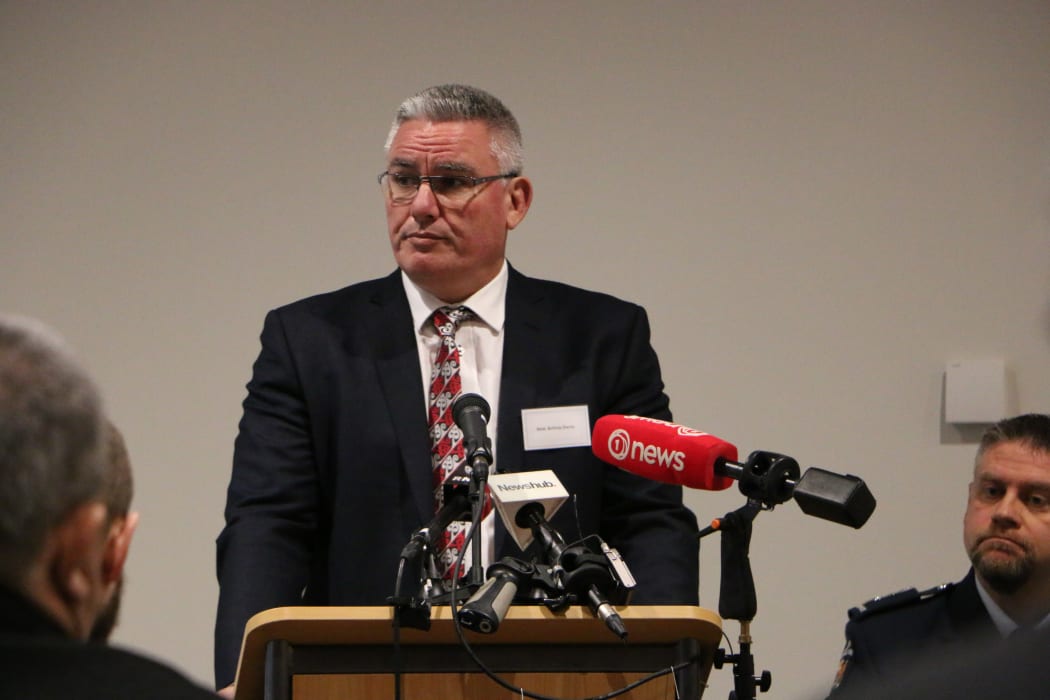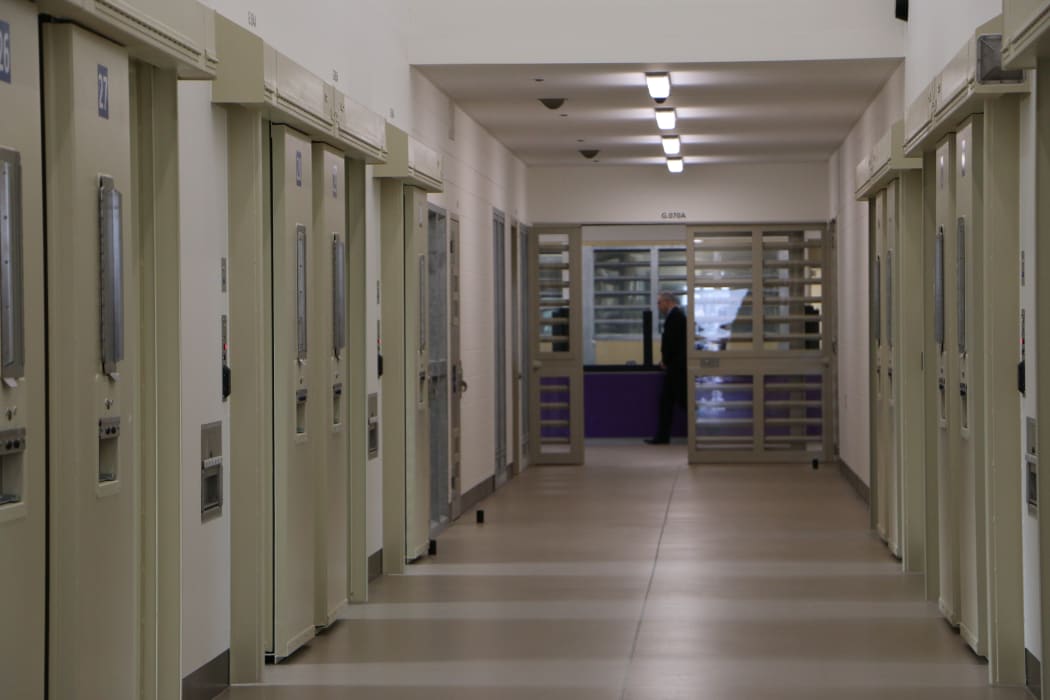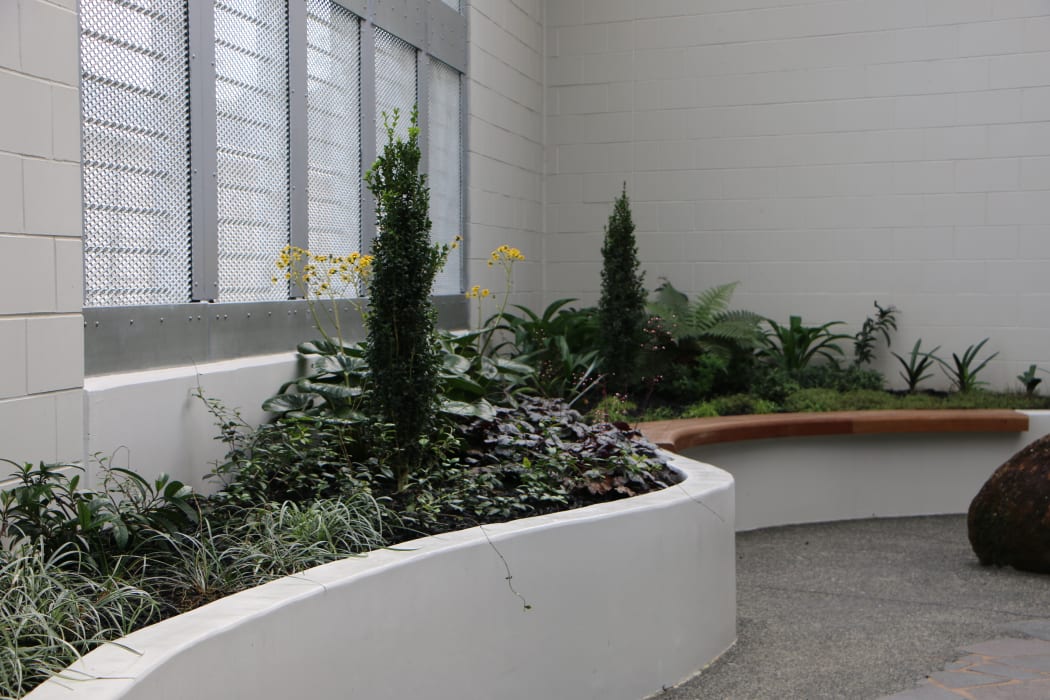Hundreds of the country's most volatile and complex prisoners will be in a new home at Auckland's Paremoremo Prison, by October.

Corrections Minister Kelvin Davis opened the new facility today. Photo: RNZ/Jessie Chiang
Corrections Minister Kelvin Davis opened the new east wing of the country's only specialist jail for high security male prisoners today.
He said the focus is on providing a new, fit-for-purpose building which is a big contrast to the one built 50 years ago.
"That facility was built in 1968 ... to plans that were developed in 1920 for the American situation," Mr Davis said.
"In those days, in the 1960s, someone would have posted the plans over to New Zealand and said, 'there's a bit of land, build it'.
"It's totally past its use-by date."

Paremoremo Prison's ward in the new wing. Photo: RNZ/Jessie Chiang
The new east wing at Paremoremo, which cost $300 million to build, will house 260 prisoners and they will be electronically monitored by staff, using cameras and electronic doors.
Corrections said it would have a significant focus on mental health treatment for prisoners with acute needs.
However despite the revamp, the total number of prisoners remains unchanged at 680.
Mr Davis said the prison has an emphasis on improved rehabilitation for inmates.
In a New Zealand first, inmates will be able to access a sensory garden.
It is in the mental health unit and designed to give inmates a natural space to talk in under supervision.
Along with its on-site health units, it will improve treatment without having to move prisoners around, Corrections said.

The sensory garden provided for inmates at Paremoremo Prison's new wing. Photo: RNZ/Jessie Chiang
Corrections chief custodial officer Neil Beales said he was excited to see what a difference the new spaces would make.
"If you need to talk something through with somebody in a less austere environment - that's out of the way - it gives you an environment where you can actually be a bit more therapeutic," he said.
"It's also a place where they [the prisoners] can find a little bit of peace, a little bit of quiet and a time for reflection."
Most of the cells, apart from those designed for high-risk prisoners, will have their own bed, toilet and shower.
Inmates in standard cells will also have access to free-to-air television, which comes at a cost of $2 per week.
Rehabilitation programmes, such as learning welding and online skills, will be available.
Corrections chief executive Ray Smith said making the new facility fully operational would take time.
"We have to make sure our people are trained to operate the new things in the facility and that they understand their way around it, how to handle emergencies and just the day-to-day running and we'll do a whole lot of operational testing," Mr Smith said.
"We're going to make sure that in all situations we know how everything works and anything that isn't working quite right, we'll have time to fix."
Mr Smith said the first prisoners would be moved to the new facility from mid-September.
He said by October, after everyone has been transferred over, the old facility would be open to the public.

